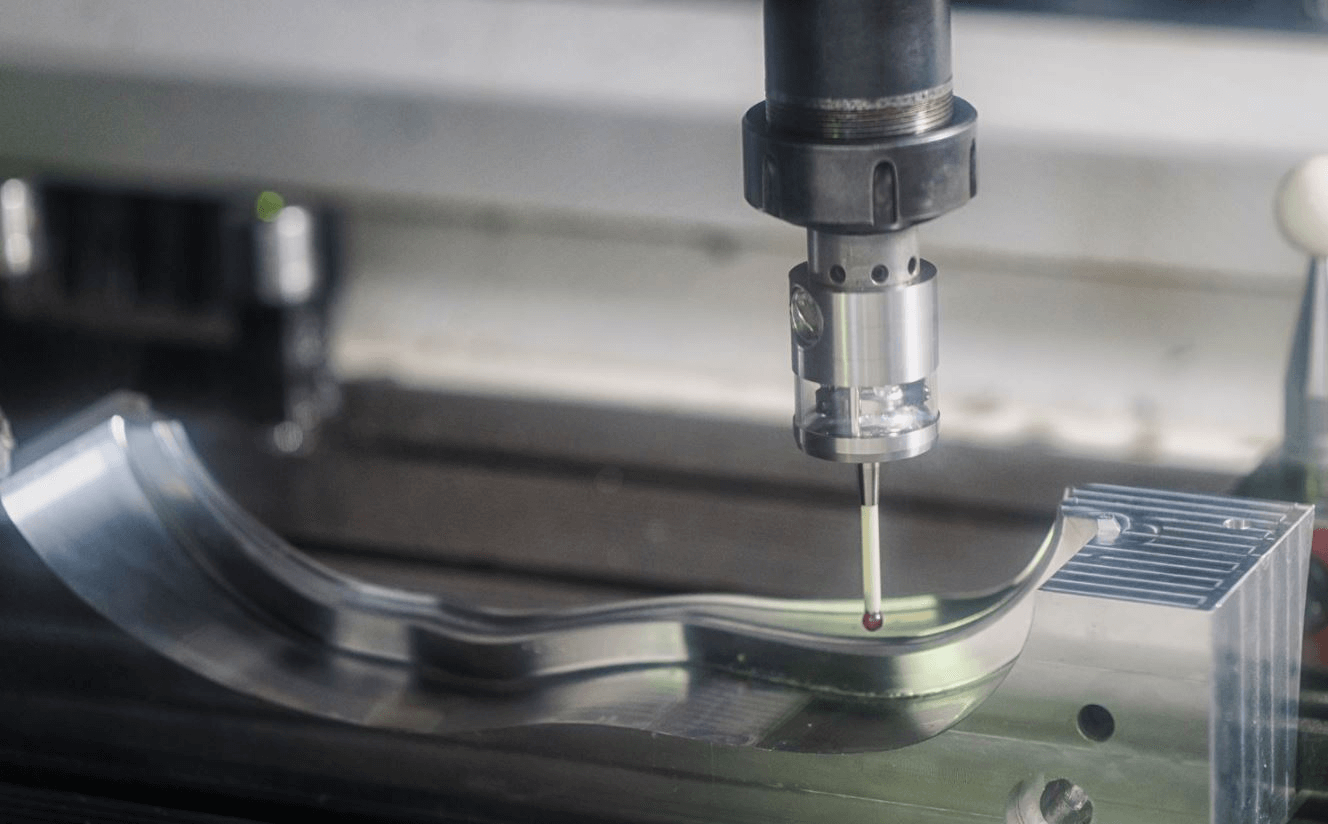CNC Machining Design Guide: Maximizing Your Outcomes
CNC machining is a versatile manufacturing process that can produce a wide variety of parts with high accuracy and repeatability. It is an essential manufacturing process for producing high-precision, complex parts for industries as diverse as aerospace, automotive, healthcare, and electronics.
But here’s the twist: Achieving perfection in CNC machining is about more than just mechanics. It’s an art form that requires a keen eye for design and a deep understanding of the process. In this article, we reveal the secrets of CNC machining design guidelines.
From general best practices to customized tips for different CNC machining operations, we dive into how to shape your designs for optimal CNC machining performance.
1.What is CNC machining?
In CNC machining, the development of a part from initial concept to physical form is a precise and technologically advanced process. First, a CNC machining designer creates a design using advanced CAD software.
The design is then converted into G-code (instruction code for the CNC machine). Following this code, the CNC machine methodically carves the part out of a solid block using specialized cutting tools.
CNC machines such as vertical and horizontal milling machines and lathes can operate on a variety of axes. To make relatively simple parts, traditional 3-axis machines can manipulate parts along three linear axes (X, Y, and Z). 5-axis machining can work along three linear axes and two rotary axes to make more complex components.
Subjective manufacturing processes allow for the production of high-precision and complex parts using a variety of materials such as metals, plastics, and composites. In addition, it is fast, automated, precise, and scalable, making it suitable for prototyping, one-off production, and mass production.
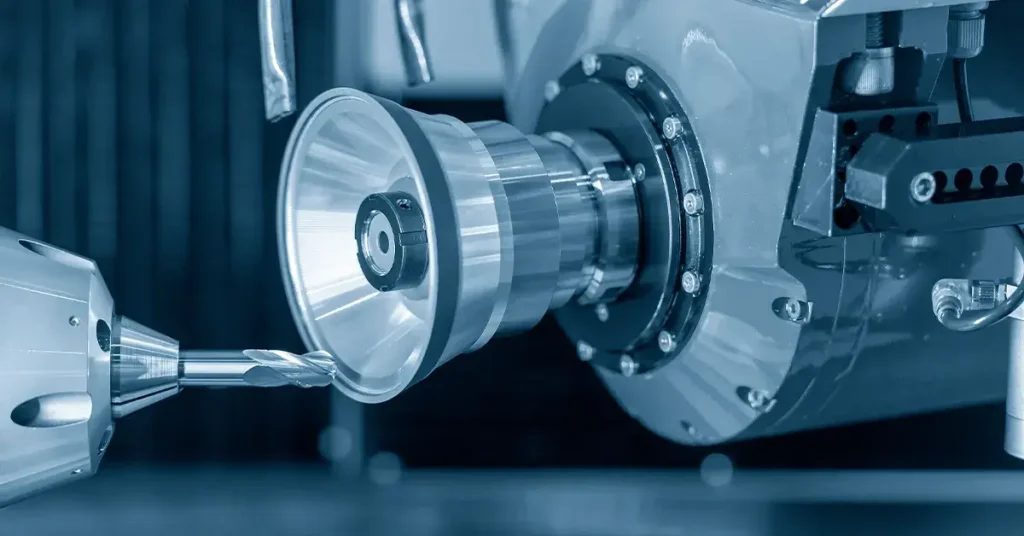
2.CNC Machining Design Guidelines: Tips for Reducing Costs
Understanding what CNC machining is lays the foundation for understanding the importance of adhering to design practices. These practices are essential to reducing costs and maintaining high quality and high precision standards.
1) Common Design Guidelines for CNC Machining
① Avoid non-planar and draft angle surfaces
Non-planar and draft angle surfaces are very complex and difficult to machine, which results in slower cutting speeds, longer machining times, and increased tool wear. In addition, these surfaces make it more difficult to achieve consistent part quality and tight tolerances.
To avoid non-planar and draft angle surfaces in your CNC machining design, do the following:
- Use simple, flat geometry whenever possible.
- Use fillets and radii to soften sharp corners and reduce the number of complex surfaces.
- Incorporate draft angles into your design to allow for easy material removal and reduce tool wear during machining.
② Increase the size of internal fillets
Internal fillets are fillets or transitions within a part that reduce stress concentrations and increase the strength of the part. Increasing the size of these fillets will improve the quality and efficiency of machining operations by:
- Reducing cutting forces and tool wear during CNC machining.
- Improving chip removal and material flow during cutting.
- Reducing the likelihood of tool breakage and premature wear.
- Improving surface finish and part quality.
③ Add undercuts to sharp corners
Undercuts are grooves or notches at the corners of a part that provide better contact with the tool and improve material removal during machining. Optimized undercut design for CNC machining will:
- Reduce cutting forces and tool wear.
- Improve chip removal and material flow during cutting.
- Reduces the likelihood of tool breakage and premature wear.
- Improves part surface finish and part quality.
However, creating undercuts can be a complex and challenging task as they are difficult to achieve using standard cutting tools. Additionally, specialized tools or multi-axis machining may be required to machine undercuts. Minimizing the size and complexity of undercuts can help achieve better results.
The following points should be considered when designing undercuts:

④ Use standard tolerances
Standard tolerances ensure that the finished CNC machining parts meet the required specifications and functional requirements. Unnecessarily tight tolerances increase machining costs and time. By specifying standard CNC machining tolerances, manufacturers can reduce the need for secondary operations and improve the overall efficiency of the machining process.
⑤ Text and fonts
When creating text or letters, the tool must be able to maintain a constant width, height, and spacing throughout the machining process. Any variation in these factors can cause the final product to not meet the design specifications.
You need to consider the font and size of the text or letters. Text that is too small may be difficult to read or may not meet the required specifications, while text that is too large may cause the tool to deflect or affect the accuracy and precision of the machining process.
To address these challenges, engineers and designers recommend some good CNC machining design practices:
- Use standard fonts that are appropriate for the machining process
- Avoid overly complex or elaborate fonts
- Specify larger font sizes
- Choose fonts that are more consistent in width, height, and spacing
- Carefully consider the orientation of the text relative to the workpiece
- Adjust the tool accordingly to maintain consistent height, spacing, and cutting speed.
⑥ Part size
CNC machines have different capabilities based on their size and capacity. Some machines may be too small to accommodate large parts, while others may not be able to handle parts that are too small. Therefore, the part to be designed should carefully consider the part size and select the appropriate machine accordingly.
In addition to the size of the machine, part size also affects the speed of the machining process. Larger parts take longer to process and are more expensive to produce than smaller parts because engineers need to remove more material during the machining process.
⑦ Choose softer materials
Softer materials are easier to machine, which can increase cutting speeds, reduce tool wear, and reduce machining time and costs. In addition, they are less likely to crack or deform during machining, which improves part quality and reduces post-machining processing time. However, soft materials should only be selected if the product’s intended use and end application allow.
⑧ Minimize tool changes and workholding setups
The higher the need for tool changes and workholding setups during a machining cycle, the more time-consuming and costly it is. You can consider the following tips to minimize tool changes and setups:
- Parts with similar features and geometries can be CNC machined using a single cutting tool.
- Reduce the required setups by designing parts with consistent orientation or using modular fixtures that can accommodate multiple parts.
- Use multifunctional cutting tools to perform multiple operations with a single tool change.
2) For CNC milled parts
① Keep in mind the available CNC cutting tools
Optimizing CNC machining parts for lower costs and shorter lead times requires combining the design with the capabilities of standard CNC milling tools. By choosing designs that match the size and capabilities of these standard tools, the need for custom or specialized tools can be greatly reduced.
A practical example is the design of internal fillets. It is recommended to avoid specifications with radii smaller than what standard CNC cutting tools can accommodate. Creating such features requires switching to smaller, possibly custom tools, which can result in increased time and cost that may not be in line with the benefits. Therefore, staying within the capabilities of standard tools is a key consideration for efficient CNC machining part production.
②Avoid sharp internal corners
CNC milling has inherent limitations, one of which is the inability to create sharp internal corners. This limitation stems from the rounded shape of CNC milling cutters. To address this problem, engineers often use fillets in their designs. The radius of these corners needs to be at least half the diameter of the milling cutter. For example, for a 1/4-inch milling cutter, the minimum radius of the fillet should be no less than 1/8 inch.
To address the challenges of sharp corner requirements of parts, we use specific design methods. These methods include:
- Drilling to “break” the corner.
- Enabling sharp edges to fit into cavities.
- Using fillets when an inclined or drafted surface intersects a vertical wall or sharp edge.
- Using a square or ball nose end mill will always result in material between the wall and the surface unless the surface is flat and perpendicular to the tool.
③Avoid deep and narrow slots or pockets
Good design practice is that the final depth of cut should not exceed certain ratios determined based on the material being machined. For example, for plastics, the ratio should not be greater than 15 times the diameter of the end mill, aluminum should not be greater than 10 times, and the limit for steel is 5 times. This is because longer tools are more susceptible to deflection and vibration, which can cause surface defects.
In addition, the fillet radius also depends on the diameter of the cutting tool. If you are CNC machining a steel part with a 0.55-inch wide slot using a 0.5-inch end mill, the depth should not exceed 2.75 inches. Additionally, high aspect ratio end mills may be more difficult to obtain. Therefore, it is recommended to either reduce the depth of the groove or feature or increase the diameter of the cutting tool.
④ Design the maximum allowable internal radius
The size of the cutting tool used in the CNC milling machine should be considered during the design stage. Larger tools remove more material at a time, thereby reducing processing time and cost. To fully utilize the capabilities of larger tools, design internal corners and fillets with a maximum radius, preferably greater than 0.8 mm.
Another trick is to make the fillet slightly larger than the radius of the end mill, such as a radius of 3.3 mm instead of 3.175 mm. This creates a smoother cutting path and makes the surface of the machined part more refined.
⑤ Choose the right thickness
It is worth noting that the thin walls of the parts will cause great challenges during the processing process, especially in maintaining rigidity and dimensional accuracy. To avoid these difficulties, you can design the wall thickness of metal parts to 0.25 mm and the wall thickness of plastic parts to 0.50 mm, because they can withstand the rigors of the manufacturing process.
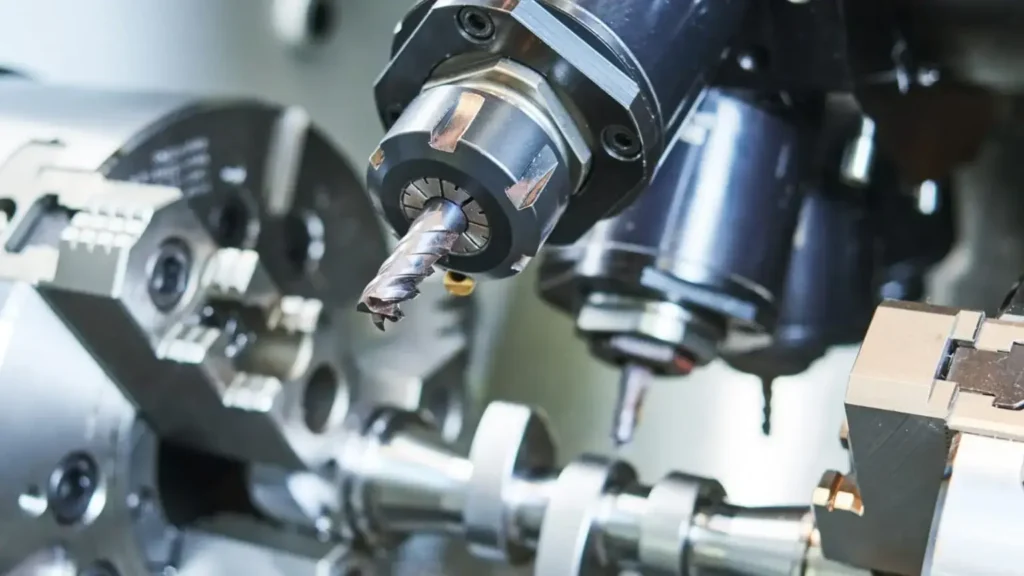
3) For CNC turned parts
①Avoid sharp internal corners
Sharp internal and external corners in part design can be a challenge during machining. To overcome this, it is recommended to:
- Have rounded internal corners to provide a gradual transition for the tool to move smoothly.
- Incorporate a small angle on steep sidewalls to eliminate sharp internal corners.
- Simplify the machining process by reducing the number of operations required for a single tool.
②Avoid long, thin turned parts
Instability is a common problem with long, thin turned parts. It is easy for the rotating part to collide with the tool, resulting in an imperfect surface effect. To solve this problem, take advantage of the following CNC design tips.
- Incorporate a center drill at the end and use the center to keep the part rotating in a straight line.
- Keep the length-to-diameter ratio at or below 8:1 to minimize the risk of instability during machining.
③Avoid thin walls
During CNC turning operations, be aware of the amount of material that is machined away. Overmachining can cause excessive stress on the part, while thin walls can lead to reduced rigidity and difficulty maintaining tight tolerances. As a guideline, turned parts should have a wall thickness of at least 0.02 inches to ensure stability and accuracy during the manufacturing process.
4) Drilling parts
① Optimal hole depth
The ideal drilling depth should take into account both the stability of the tool and the strength of the material being processed. Drilling too shallow can result in a loose joint and reduce the holding power of the screw, while drilling too deep can cause the drill to break or bend, resulting in poor accuracy and surface finish.
To determine the optimal hole depth, you must consider the size of the drill, the hardness and thickness of the material, the strength required for the intended application, and the overall stability of the machine setup. It is recommended that the drilling depth be just enough to accommodate the screw or fastener and leave some material for support. If a countersink is required, the hole should be drilled deeper to accommodate the countersink.
② Differentiate between through holes and blind holes
It is important to understand the difference between through holes and blind holes because they both require different drilling techniques and tools.
A through hole is a hole that runs through the entire workpiece from one end of the workpiece to the other. Because the drill must enter and exit the workpiece from opposite sides, through holes are generally easier to process. Through holes are suitable for fastening, mounting, and wiring of electrical and mechanical components.
On the other hand, blind holes do not pass completely through the workpiece and stop at a specific depth. They are suitable for creating cavities, grooves or pockets within a workpiece and are generally more difficult to produce than through holes. Blind holes require special CNC drill bits and cutting speeds to ensure that the cutting edge does not break through the bottom of the part.
③Avoid partial holes
Partial holes occur when the drill bit cannot fully penetrate the material, which can be caused by a variety of factors, such as drill breakage, incorrect drill selection, or incorrect parameters such as speed, feed and cutting depth. Therefore, you should choose the right drill bit, maintain the correct parameters, and use coolant to dissipate heat.
④Avoid drilling through cavities
When drilling, keep in mind that holes that intersect existing cavities in the part may compromise its structural integrity. You can avoid this by moving the drilling point away from the existing cavity. However, if the drill hole must pass through the cavity, one working practice is to ensure that its center axis does not intersect with it to maintain the stability of the part.
⑤Design standard drill size
Optimize your design for standard drill bit sizes to save time and money and make it easier for machine shops to produce your parts without expensive custom tooling.
Consider using standard drill bit sizes (such as 0.12 inches) instead of more precise but less common sizes (such as 0.123 inches). In addition, try to limit the number of different drill bit sizes used in CNC designs, as multiple sizes increase the time and effort required to change tools during machining.
⑥ Specifying threaded holes
Threaded holes can be used to connect bolts, screws, and other threaded fasteners. Make sure to specify the correct thread depth so that the threaded fastener has enough engagement to hold the parts together. The deeper the thread, the stronger the fastener grip.
The type of material affects the type of thread. On the one hand, soft materials may require shallower threads. On the other hand, harder materials may require deeper threads.
When specifying threaded holes in drawings, use clear and accurate thread annotations to ensure the correct thread standard, pitch, and depth. Make sure there is enough clearance to install and remove threaded fasteners without jamming or stripping the threads.
⑦ Avoid deep tapping
Another key tip for achieving accurate and precise results is to avoid deep tapping. The longer the tap, the greater the risk of vibration and play during operation, resulting in defects in the final product. Taps that are more than 3 times their diameter are deep and can present significant challenges.
However, in many cases, even a tap that is 1.5 times its diameter will provide sufficient thread engagement, eliminating the need for a deep tap. Using a deep tap increases the risk of tool breakage, thread defects, and reduced accuracy, making it an unwelcome aspect of CNC machining design.
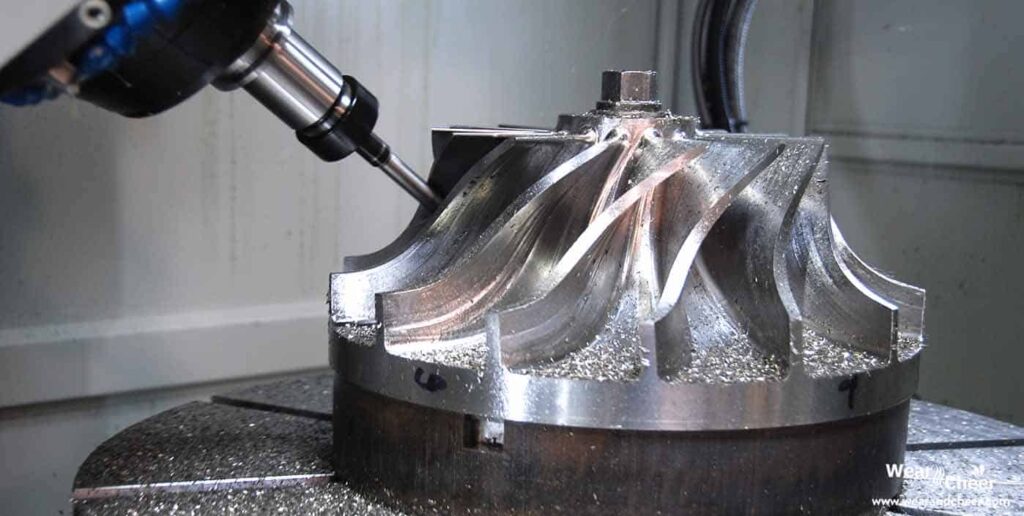
3.Limitations that affect CNC machining design
When designing parts for CNC machining, it is important to be aware of certain limitations. Understanding these limitations is key to ensuring that the final product meets the required specifications and maintaining an efficient and economical production process.
1) Tool capabilities
One challenge of the CNC machining process is the ability of the tool to reach and accurately machine features with large aspect ratios. Tool capabilities and reachability also play a role in determining the shape of the workpiece and the difficulty of reaching and machining complex features.
For example, a deep cavity may require a tool such as a CNC threading tool or a drilling tool with an extended reach to reach the bottom. This increases machine chatter and reduces accuracy. Therefore, the size, shape, travel distance and other factors of the tool are major design limitations for CNC machining and affect the accuracy of the final product.
2) Tool shape
Another thing you must consider is the geometry of the cutting tool, as most cutting tools have a cylindrical shape and a limited cutting length, which affects the final cut and its shape.
For example, even if the cutting tool used is very small, the internal corners of the workpiece always have a radius. This is because the geometry of the tool is transferred to the machined part during the material removal process.
The cylindrical shape and restricted cutting length of common CNC cutting tools, such as end mills and drills, also limit their ability to machine certain features.
3) Tool stiffness
In CNC machining, CNC machine and tool manufacturers use carbide, tungsten, or similar materials that outperform the workpiece. Despite the high-performance characteristics of these materials, tool deflection can still occur and is a major source of design and result deviation.
While it may not be a problem when working within general tolerances, slight tool deflection can become a significant problem in precision work with tight tolerances. Deviations caused by tool deflection can limit design possibilities and compromise the accuracy of the final product.
4) Workpiece stiffness
Cutting tools have excellent stiffness and high-performance characteristics, but may not be suitable for certain workpiece materials with excellent mechanical properties.
Workpiece stiffness can cause vibration and deflection, which can negatively affect the accuracy and precision of CNC machining operations. The accuracy and precision that can be achieved with rigid workpieces can vary, making it difficult to meet tight tolerances.
5) Workpiece shape
The stability and success of CNC machining depends largely on the shape of the workpiece. The geometry of the workpiece is important because it determines the number of processes required and the overall feasibility of the design. In some cases, complex geometries may require repositioning during machining, even on multi-axis machines, resulting in reduced production efficiency.
6) Workpiece clamping
Rigidity is critical in machining because it ensures smooth and accurate operations. Weak links in the “rigidity chain” consisting of machine, tool, part and fixture can cause vibration and reduce accuracy.
Any movement of parts during machining will cause inconsistent results and deviation from tolerance. Improper setup will result in low accuracy and lack of precision because each machined part will be different.
4.Importance of CNC machining design for manufacturability
The design of machined parts is the foundation of the entire manufacturing process and is critical to the success of the finished product. Design for manufacturability (DFM) helps optimize the manufacturing process to make it faster, more efficient and more cost-effective. This often requires modifying specific features that cannot be produced by existing equipment and materials.
1) Reduce manufacturing costs and time
Part design plays an important role in determining the efficiency and speed of the manufacturing process. By considering factors such as tool selection, cutting parameters, and machine capacity, manufacturers can optimize the production process to increase speed and efficiency. In addition, this can reduce cycle time, increase productivity, and reduce production costs.
2) Efficient and streamlined manufacturing processes
The efficiency of CNC machining is directly affected by the characteristics of the machined parts. When parts are configured to reduce tool wear and cycle time, they can improve machine utilization, thereby increasing productivity and profitability. In addition to DFM principles, attention is also paid to maximizing material utilization, which is a key factor in reducing costs and increasing profits.
Efficient use of materials is of great significance to reducing overall production costs. By carefully selecting the right material and considering its characteristics such as thickness and matching with the intended geometry, manufacturers can use materials more effectively, thereby minimizing waste and optimizing production costs.
3) Avoid fatal design flaws
Integrating CAD and CAM software in the manufacturing process provides great design flexibility when modifying part specifications. This adaptability is essential to adapt to rapid changes in customer needs or make adjustments to improve performance, quality, or cost-effectiveness.
This flexibility enables a variety of process optimizations. For example, manufacturers can simplify tool paths, reduce the number of required setups, or use materials more efficiently. In addition, this approach helps increase production automation, thereby reducing human error and the need for repeated setups.
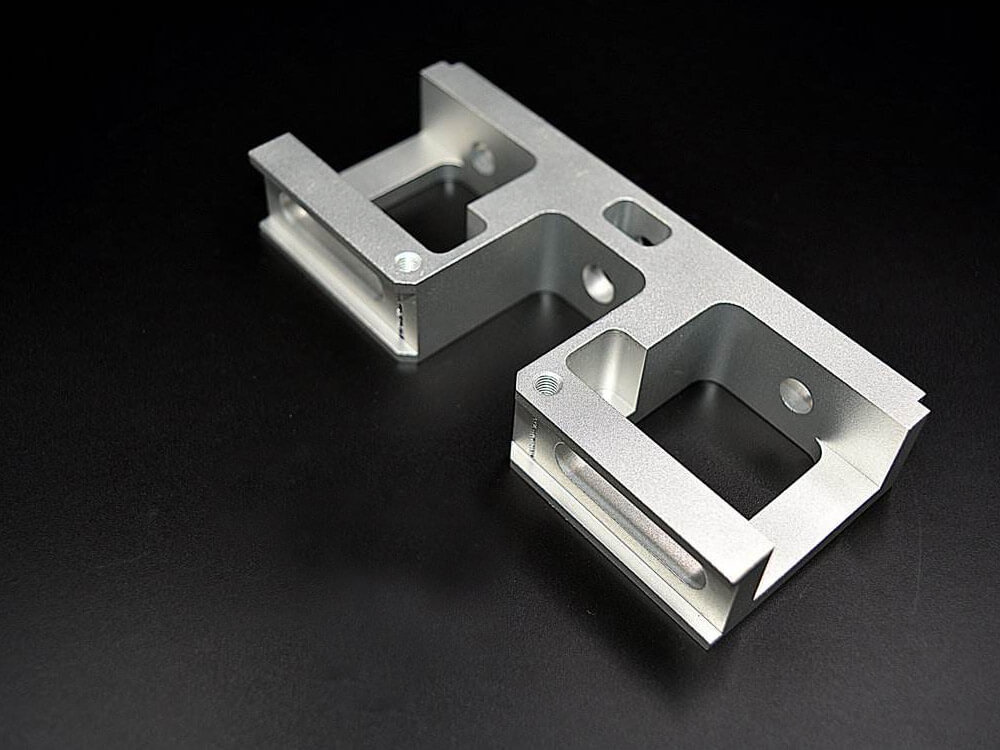
5.CNC Machining Material Selection Guide
Material selection is an important aspect of this CNC design guide because the properties of CNC machining materials will affect the machinability, cost, and overall quality of the finished part.
1) Metals
Metals are strong and durable materials suitable for manufacturing CNC machining parts that are subjected to high stress and heavy loads. In addition, they have good machinability, heat resistance, and corrosion resistance, and are versatile in producing components for different applications.
Some common CNC metals include:
- Aluminum
- Steel
- Stainless steel
- Brass
- Copper
- Titanium
2) Plastics
Plastics are popular materials for CNC machining because they are inexpensive, lightweight, and can be molded into complex shapes. Additionally, some plastics, such as PP (polypropylene) and polyetheretherketone (PEEK), are chemically resistant, making them ideal for manufacturing parts that are used in harsh chemicals or corrosive environments.
Some common CNC plastics are:
- Polyoxymethylene (POM)
- Nylon
- Polycarbonate (PC)
- Acrylic (PMMA)
- Polyphenylene oxide (PPO)
- Polyetheretherketone (PEEK)
- Polyethylene (PE)
6.Surface Finish Options for CNC Machining
The surface finish of the final product affects its appearance, function, and durability. Common finishing options for CNC machining parts include:
1) After machining
This is the original surface finish produced by the CNC machining process. The surface finish of the machined part is typically 125 µin Ra, but tighter tolerances can be achieved by requesting a finer finish (63, 32, or even 16 µin Ra). The machined surface may have visible tool marks and the finish may be uneven.
2) Sandblasting
For a smooth matte finish, sandblasting is a good option. The process involves spraying tiny glass beads onto the surface of the machined part in a controlled manner. The resulting surface is smooth and uniform. Different materials such as sand, garnet, walnut shells, and metal beads can be used depending on the desired result and the purpose of the sandblasting, whether it is for cleaning or as a pre-treatment for further surface finishing.
3) Anodizing (Type II or Type III)
Anodizing is a versatile and popular surface treatment for CNC machining parts, providing excellent corrosion resistance, increased hardness, wear resistance, and better heat dissipation.
4) Powder Coating
The powder coating process is a very effective way to protect mechanical parts from wear, corrosion, and the elements. In this method, a special type of powder coating is applied to the surface of the part, which is then placed in an oven and baked at high temperatures.
This process creates a long-lasting protective coating and is available in a variety of color options. Whether you need a classic or bold look, powder coating provides a versatile and durable solution for your mechanical parts.
7.Summarize
If you are looking for an experienced CNC machining manufacturer, Xavier is your ideal choice. The Xavier team is well-equipped to provide high-quality CNC machining solutions. If you need more information or to discuss your machining needs with us, please feel free to contact us.
